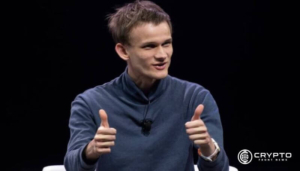- Alex Gluchowski highlights Ethereum’s credible neutrality as crucial to its continued role as the foundation for a decentralized Internet of Value.
- ZKsync encourages Layer-2 projects to align future designs with Ethereum’s evolving base layer architecture to maintain compatibility and growth.
- Vitalik Buterin’s proposal to adopt RISC-V aims to enhance Ethereum’s execution layer, improving scalability and simplifying future upgrade processes.
Alex Gluchowski, founder of ZKsync and CEO of Matter Labs, highlighted Ethereum’s essential role in shaping the decentralized Internet of Value. Emphasizing Ethereum’s position as the “world computer,” Gluchowski stated that decentralized versions of platforms like Nasdaq and SWIFT could emerge, but Ethereum would continue to act as the central base layer.
Gluchowski pointed out that Ethereum’s core strength lies in its credible neutrality. As long as Ethereum maintains its status as a secure and impartial platform, he explained, value would continue to flow into ETH, either directly or through interconnected systems.
Ethereum Set to Anchor a Multi-Chain Ecosystem
Gluchowski further explained that future global transaction infrastructures would not rely solely on one blockchain. Drawing a parallel to the internet’s distributed server model, he noted Ethereum’s role would become that of a fundamental settlement layer supporting a network of decentralized chains.
Gluchowski specifically spoke to Layer-2 developers about developing projects that should match Ethereum’s modern architectural design. His message warned that Ethereum development needs to stop sustaining a connection to past protocols while preparing for its upcoming structure, which now gets support from new proposals by Ethereum core developers.
Vitalik Buterin Proposes Major Upgrade to Ethereum’s Core
Vitalik Buterin recently suggested that Ethereum Virtual Machine (EVM) should be replaced by RISC-V, which serves as an open-source architecture that features extensive encryption and flexible capabilities. The EVM supports Ethereum’s smart contract ecosystem by providinga foundation for many Layer-2 and independent blockchains that follow its standards.
RISC-V implementation would enhance Ethereum’s execution layer performance and simplify its scalability, according to Buterin. The new architectural approach seeks to enhance Ethereum’s performance during updates as well as future performance improvement through system simplification.
ZKsync Preparing for Ethereum’s Next Phase
Gluchowski confirmed that ZKsync has been actively preparing for these potential shifts. He indicated that announcements revealing developments aligned with Ethereum’s changing architecture would be made soon.
Gluchowski hinted that ZKsync plans to release details within two weeks. These updates will reflect ZKsync’s commitment to supporting Ethereum’s growth into a foundational layer for a decentralized multi-chain economy.





